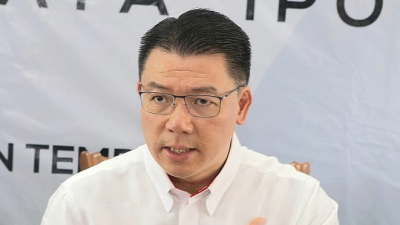
The Regional Comprehensive Economic Partnership (RCEP) trade agreement will come into force on January 1, 2022, initially in ten countries.
Some did not anticipate that the RCEP would take effect until sometime during the first half of 2022 at the earliest, but the sense of crisis in Asean prompted its early entry into force.
Ratification accelerated faster than expected
The RCEP, comprising 15 East Asian countries, will take effect on January 1, 2022. The agreement enters into force 60 days after a majority of Asean and non-Asean signatories deposit instruments of ratification with the Secretary-General of Asean.
Australia and New Zealand each deposited instruments of ratification on November 2, so the RCEP will enter into force on January 1, 2022.
Hopes of the RCEP entering into force by the end of 2021 had been dashed due to the explosive increase in the number of new COVID-19 cases in Asean in the spring and summer of 2021, putting pressure on governments to deal with the situation.
Some were pessimistic that the RCEP would take effect in the first half of 2022 at the earliest.
Under these circumstances, the Asean countries that had not yet ratified the RCEP accelerated the procedures toward the Asean Summit and related summit meetings scheduled for late October.
Sense of crisis in Asean
The accelerated ratification reflects a sense of crisis that Asean could fall into oblivion and that Asean centrality could be undermined.
Its purpose was to demonstrate a strong determination to bring the RCEP into effect at an early stage to maintain the centrality of Asean as the hub of the RCEP.
Asean is facing two main crises. The first is that successive frameworks outside of Asean have been launched in the region where Asean should be the center.
The second is that the cohesion of Asean is being shaken. The early entry into force of the RCEP was crucial to maintaining Asean centrality.
Regarding the first crisis, in recent years the Free and Open Indo-Pacific (FOIP) has been advocated as a concept to ensure peace and prosperity for the region as a whole by developing the Indo-Pacific region as “international public goods” through the maintenance of a rules-based international order.
The importance of Asean centrality and unity has been firmly established as part of this order.
Now, however, the Biden administration is adopting a strategy of cooperating with its allies and friends to take a stand against China.
The Quad, formed by the United States, Australia, Japan and India as a consultative body on security and the economy, has been upgraded to a summit meeting.
In addition, the United States, the United Kingdom, and Australia recently announced a new military security partnership, AUKUS.
The second crisis stems from the response to the coup that occurred in Myanmar in February 2021.
At an Asean Leaders’ Meeting convened in April, Asean leaders received a “Five-Point Consensus” from Myanmar’s State Administration Council (SAC) Chairman Min Aung Hlaing (Commander-in-Chief of Defense Services) including the dispatch of a special envoy of the Asean Chair.
Ahead of the Asean Summit and Related Summits in late October, the foreign ministers of the major Asean member states became increasingly concerned about the lack of progress in fulfilling the points of the consensus, and Asean held an Emergency Foreign Ministers’ Meeting.
The foreign ministers’ meeting decided to exclude the SAC chairman from the Summits, with participation restricted to “non-political representatives.”
There were concerns that, were the SAC chairman allowed to attend the Summit despite the lack of progress in the Five-Point Consensus, the United States and other dialogue partner countries would boycott the Summit, and Asean would be labelled as dysfunctional.
The Myanmar Caretaker Government boycotted an entire series of Asean-related summit meetings, claiming that they violated the Asean Charter, including the principles of unanimity and non-interference in internal affairs.
Asean has gained an international presence and influence through the unity of its ten member states, but cracks in that unity are beginning to appear.
RCEP will help maintain Asean centrality
Given such circumstances, connecting 15 East Asian countries through RCEP has significant benefits for corporate business operations.
In terms of trade in goods, these include:
1. Companies will have more options in terms of using the Asean+1 FTA or the RCEP;
2. Some items that were excluded from tariff reduction or elimination under the Asean+1 FTA are now subject to tariff reduction or elimination under the RCEP; and
3. A common “rule of origin” will be applied within the RCEP region.
The early realization of the RCEP is a clear message to businesses of “Asean as a hub in East Asian FTAs,” and will contribute to maintaining and strengthening Asean’s centrality.
(Seiya Sukegawa is Professor at Faculty of Political Science and Economics, Kokushikan University, Japan.)
ADVERTISEMENT
ADVERTISEMENT








































